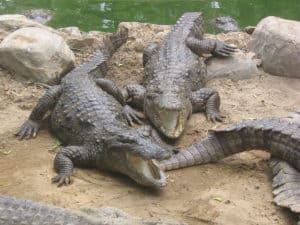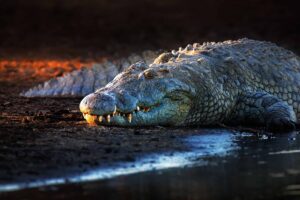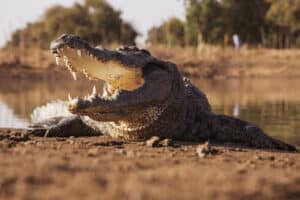Continue reading for our analysis...
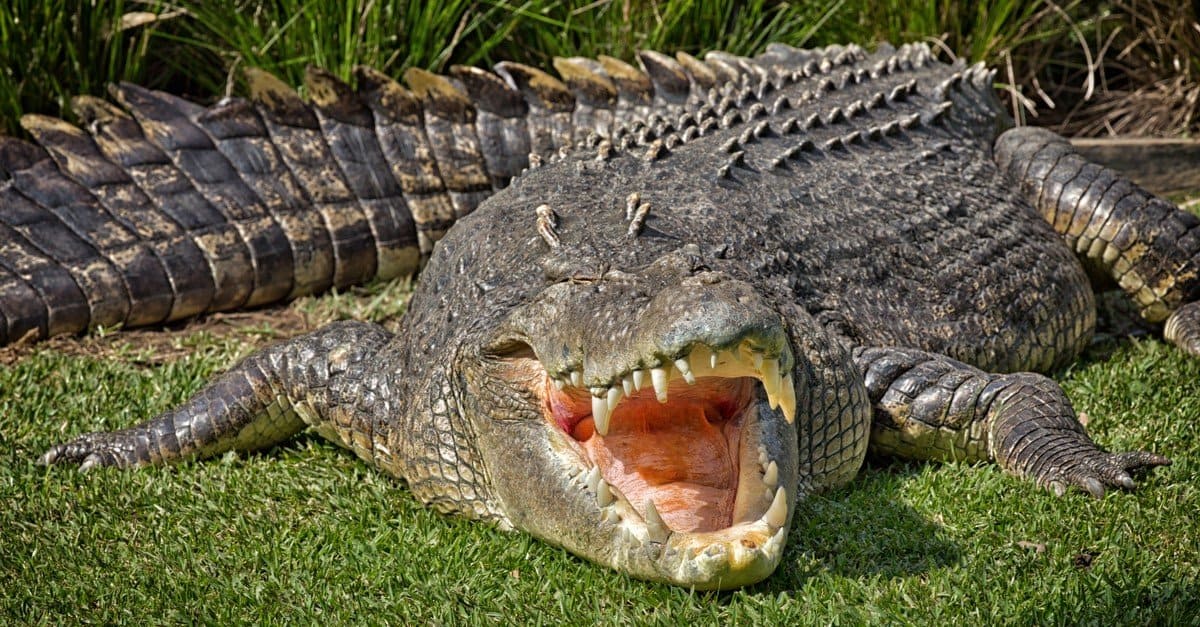
Some of the most impressive crocodile footage on the web is of saltwater crocodiles. These magnificent creatures are the largest of all crocodiles and are the biggest reptiles on the planet.
So, it is unsurprising that humans do not like to get too close to them! As a result, most of the footage is captured from boats as we see here.
The giant 18-foot-long croc has been lured towards the tourists with some fresh meat on a rope.
The Sheer Size of Saltwater Crocodiles
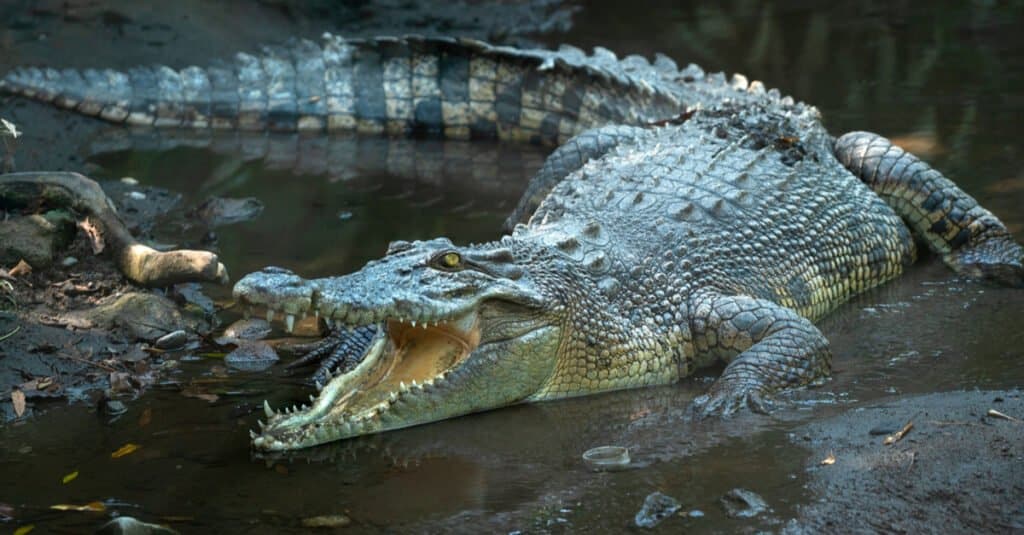
Saltwater crocodiles are on average around 17 feet long, with the largest reaching up to 23 feet.
©Pius Rino Pungkiawan/Shutterstock.com
The average saltwater crocodile is around 17 feet long with a weight of around 1,000 pounds. There are also exceptional individuals who have grown to 23 feet and weighed 2,200 pounds! Their tails alone can be longer than seven feet and their teeth can be four inches long.
Saltwater crocs are called ‘salties’ or estuarine crocodiles because they are able to live in salty water. Their habitat range extends from northern Australia to eastern India and Southeast Asia.
Even though their usual location is coastal waters, you will also find them in freshwater habitats. However, they can also be spotted in the open sea where they can sometimes spend weeks at a time.
Saltwater Crocodile Hunting and Speed
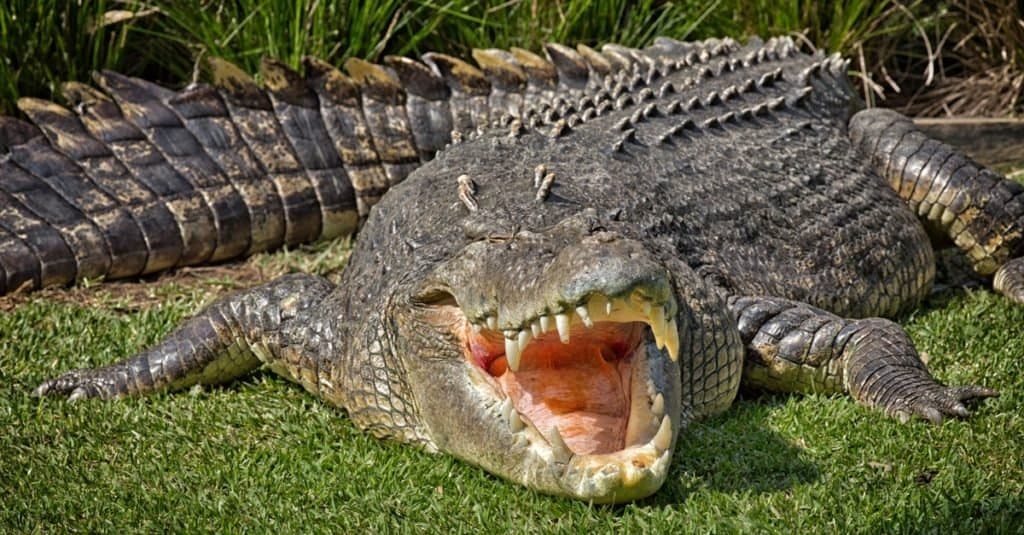
While they typically move very slowly, saltwater crocodiles can reach speeds of up to 18 mph.
©PomInOz/Shutterstock.com
We see the crocodile in this clip move efficiently across some very slippery mud flats. Crocs have developed a number of different locomotion styles to suit the surface they are on.
For mud, they use a belly crawl but on other surfaces, they can ‘high walk’ where the body is pushed off the ground and, less often, they can be seen bounding a bit like a rabbit. On the whole, a fit human could outrun a croc on land. In the water, they can travel up to around 15mph and are helped along by their powerful tail.
Their diet is made up of fish but they will also eat turtles, birds, and snakes. If they get the opportunity, they will also tackle livestock and wild boar. By using their huge and powerful jaws they are able to overcome their prey.
They have one of the most powerful bites in the world — this has been recorded at 3,700 PSI in scientific experiments. But this is much less than the prehistoric crocodiles who walked the earth millions of years ago.
Even so, our modern-day crocs are still responsible for thousands of attacks on humans each year so the safest place to observe them is from a distance!
Is Crocodile Hunting Common?
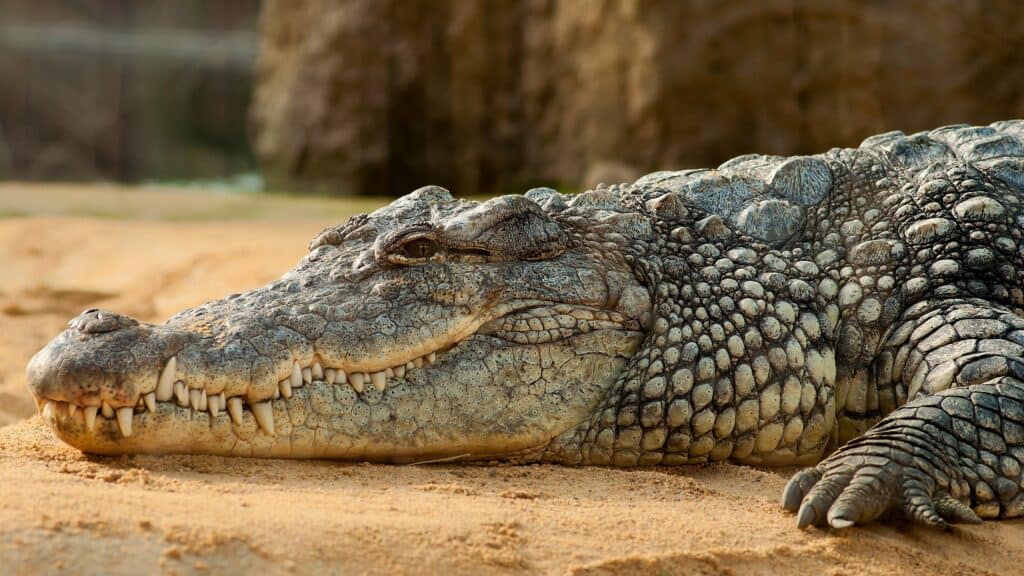
The legality of crocodile hunting varies depending on the location and the species of crocodile being hunted.
©Khalil Ahmed/Shutterstock.com
Crocodile hunting is a controversial topic that has sparked debate and discussion around the world. While some people see crocodile hunting as a way to control populations and protect human communities, others argue that it is cruel and unnecessary.
Crocodile hunting has a long history, with people in many parts of the world hunting crocodiles for food, leather, and other products. In some cases, crocodile hunting is also used as a means of controlling populations in areas where they pose a threat to humans or livestock. For example, in some parts of Africa and Asia, crocodiles are seen as a threat to local communities and are hunted to reduce their numbers.
However, crocodile hunting can also have negative impacts on populations and ecosystems. In many parts of the world, crocodiles are endangered or threatened due to habitat destruction and overhunting. When crocodiles are hunted in large numbers, this can have a significant impact on their populations, causing declines that can take years or even decades to recover from.
In addition, hunting can disrupt the social dynamics of crocodile populations, which are often complex and interdependent. When large, dominant crocodiles are removed from a population, this can create a power vacuum that can lead to increased aggression and conflict among remaining individuals.
Is This Normal Behavior?
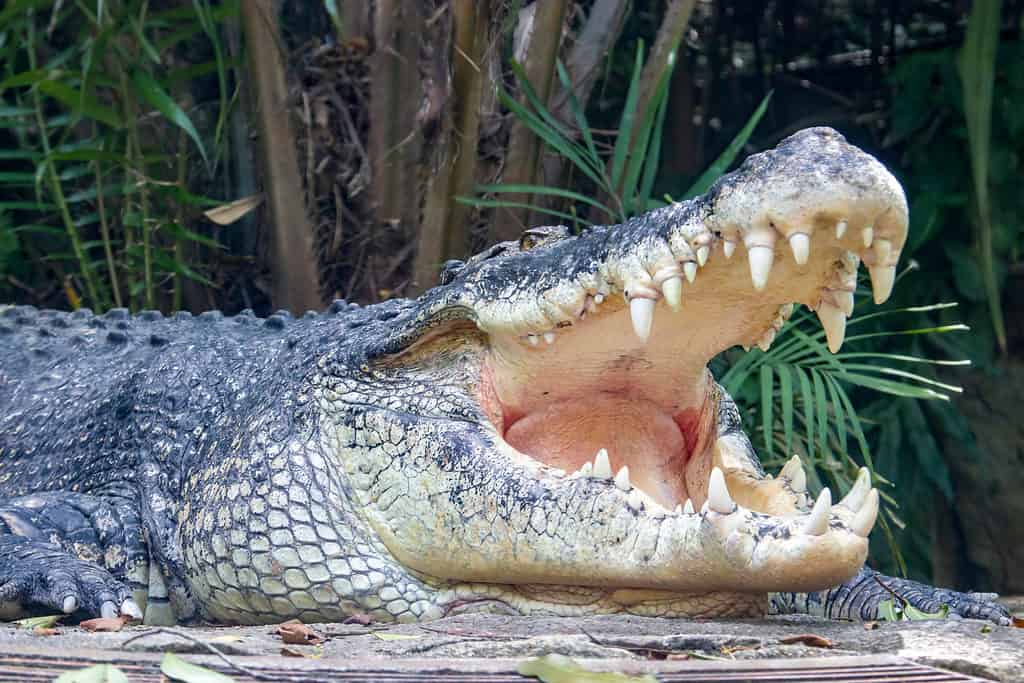
It’s dangerous and sometimes illegal to feed saltwater crocodiles.
©Danny Ye/Shutterstock.com
While there may be tourist shuttles that give people the opportunity to feed saltwater crocodiles from the seeming “safety” of a boat, such as is seen in this video, that doesn’t mean it’s an advisable thing to do.
It’s smart to always keep a safe distance of at least 5 meters from the water’s edge if you are in an area where saltwater crocodiles could be encountered. It’s also dangerous to feed crocodiles because they can start to associate humans with food. It’s also an illegal activity in many places.
Even if it isn’t, that doesn’t mean it’s not dangerous.
More Fascinating Crocodile Videos You Might Enjoy
Saltwater crocodiles are the largest living reptiles and are capable of performing many astonishing feats because of their impressive mass and natural strength. In this next thrilling video, you can watch a crocodile take on the largest land mammal on the planet: an African elephant. This encounter is proof of just how fearsome and ferocious crocodiles can be, even in the face of a battle that is impossible for them to win.
Thank you for reading! Have some feedback for us? Contact the AZ Animals editorial team.



